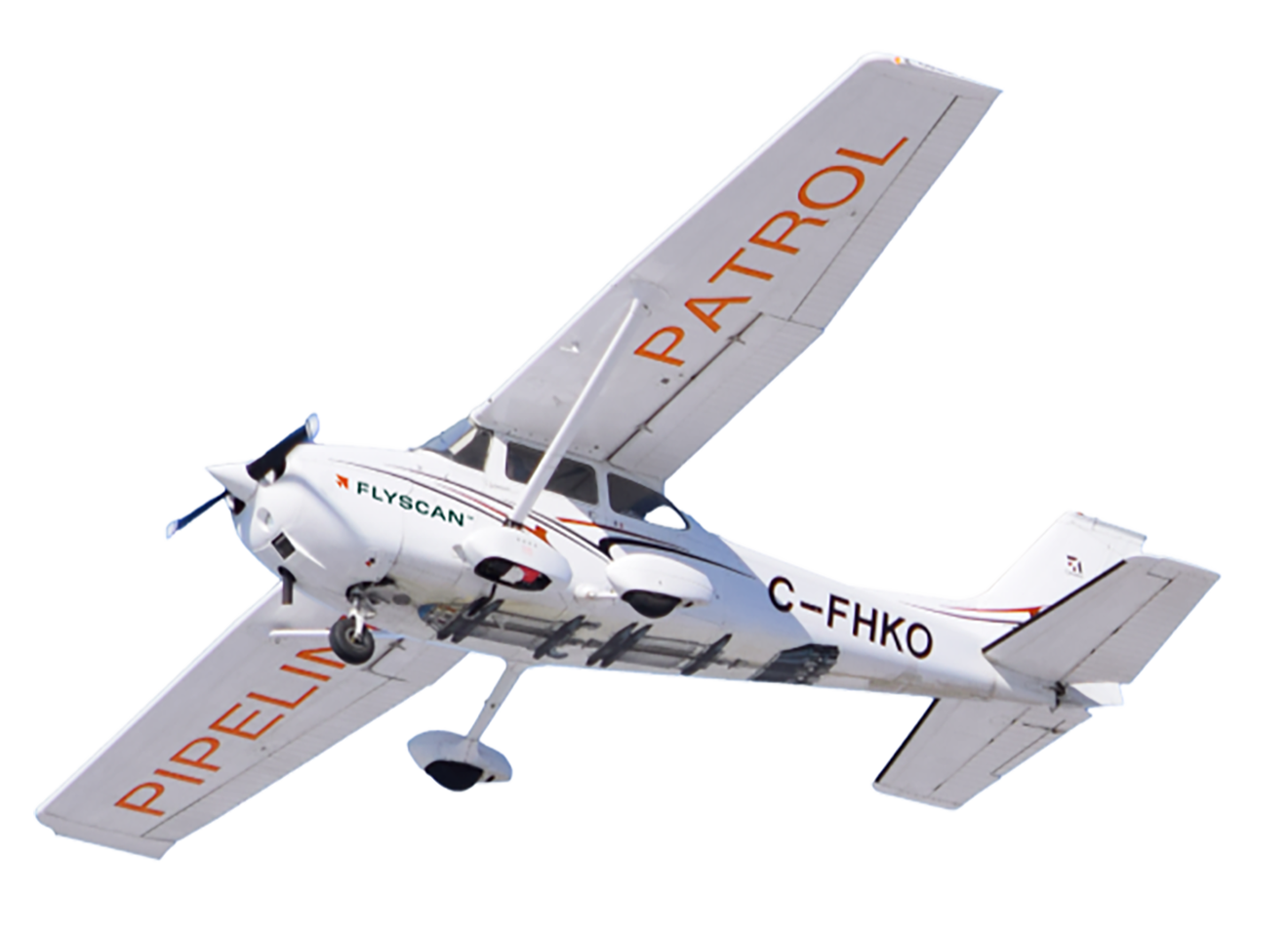Enbridge’s $1M investment and support aims to improve safety of energy industry infrastructure
They are the energy industry’s eyes in the sky—and they may soon include laser focus.
Regular aerial right-of-way (ROW) patrols are an important component of ensuring energy infrastructure safety, and a Canadian startup is hoping to raise the technological stakes of these flyovers with a groundbreaking aerial surveillance platform.
Enbridge, which operates a multi-layered leak prevention and detection program on its pipeline network, recently announced its US$1-million investment in a US$4.3-million venture capital financing agreement by Quebec City-based Flyscan Systems, as Flyscan works to bring its technology to market. BDC Canada’s Cleantech Fund and the National Optics Institute (INO) are also part of the financing.
“During our patrols, pilots are watching for leaks and identifying threats or encroachments on our rights-of-way. But they’re also human, and while they’re in the air, they are multitasking with instrumentation and communications,” notes Ray Philipenko, the Edmonton-based director of Enbridge’s Pipeline Control Systems and Leak Detection (PCSLD) group.
“We anticipate that Flyscan’s technology will help enhance and augment the monitoring capability of the pilot.”
Flyscan’s platform consists of a two-pronged approach—an active ultraviolet LiDAR (Light Detection and Ranging) laser and a passive hyperspectral camera, both mounted on small planes or helicopters.
LiDAR technology is calibrated to identify small leaks and detect hydrocarbons unique to a crude oil and liquids pipeline system. The complementary suite of optical sensors can capture terabytes’ worth of digital images to help pipeline operators detect leaks, ROW encroachments and geohazard threats, such as slope instability.
“We are extremely fortunate to have a strategic investor that not only operates the longest and most complex crude oil and liquids pipeline system in the world, but is also a known market leader for the adoption of new technologies,” says Eric Bergeron, founder and CEO of Flyscan.
“Enbridge’s contribution to our development will go beyond financial support, to include defining the industry’s needs and providing a real-life business case demonstration.”
Collaborating with Flyscan also represents an opportunity for Enbridge’s Technology + Innovation Lab, which is focused on developing analytics-based safety solutions and the use of data as an organizational asset.
As part of this project, Enbridge plans to build a foundational software framework using Artificial Intelligence with deep learning algorithms that will be capable of ingesting a significant amount of optical data. The software may eventually process data from additional sources, including satellites and drones.
“Enbridge is committed to protecting the environment. In collaborating with Flyscan we are building new ways to advance pipeline leak detection and improve right-of-way monitoring,” says Bhushan Ivaturi, Enbridge’s Senior Vice President and Chief Information Officer who leads Technology, Information Services and Digital at Enbridge. “At Enbridge, we are harnessing the power of data, technology and innovation to further advance pipeline safety.”
Tests of Flyscan’s hyperspectral camera began along Enbridge’s pipeline network in December 2020, while LiDAR laser testing on the Enbridge system is on track for early 2022.
“The work being done by Flyscan is exciting and very promising,” notes Cam Meyn, a supervisor with Enbridge’s PCSLD group. “Multiple groups here at Enbridge see great value in this technology—not only for leak detection, but overall right-of-way management.”
Enbridge’s “defense-in-depth” leak detection approach includes Computational Pipeline Monitoring (CPM) systems and 24/7 controller monitoring, in addition to air and ground patrols augmenting a comprehensive and rigorous prevention and detection.
“Enbridge’s investment in Flyscan demonstrates our commitment as an industry leader in safety and innovation,” says Phil Martin, Leak Detection Manager at Enbridge.
